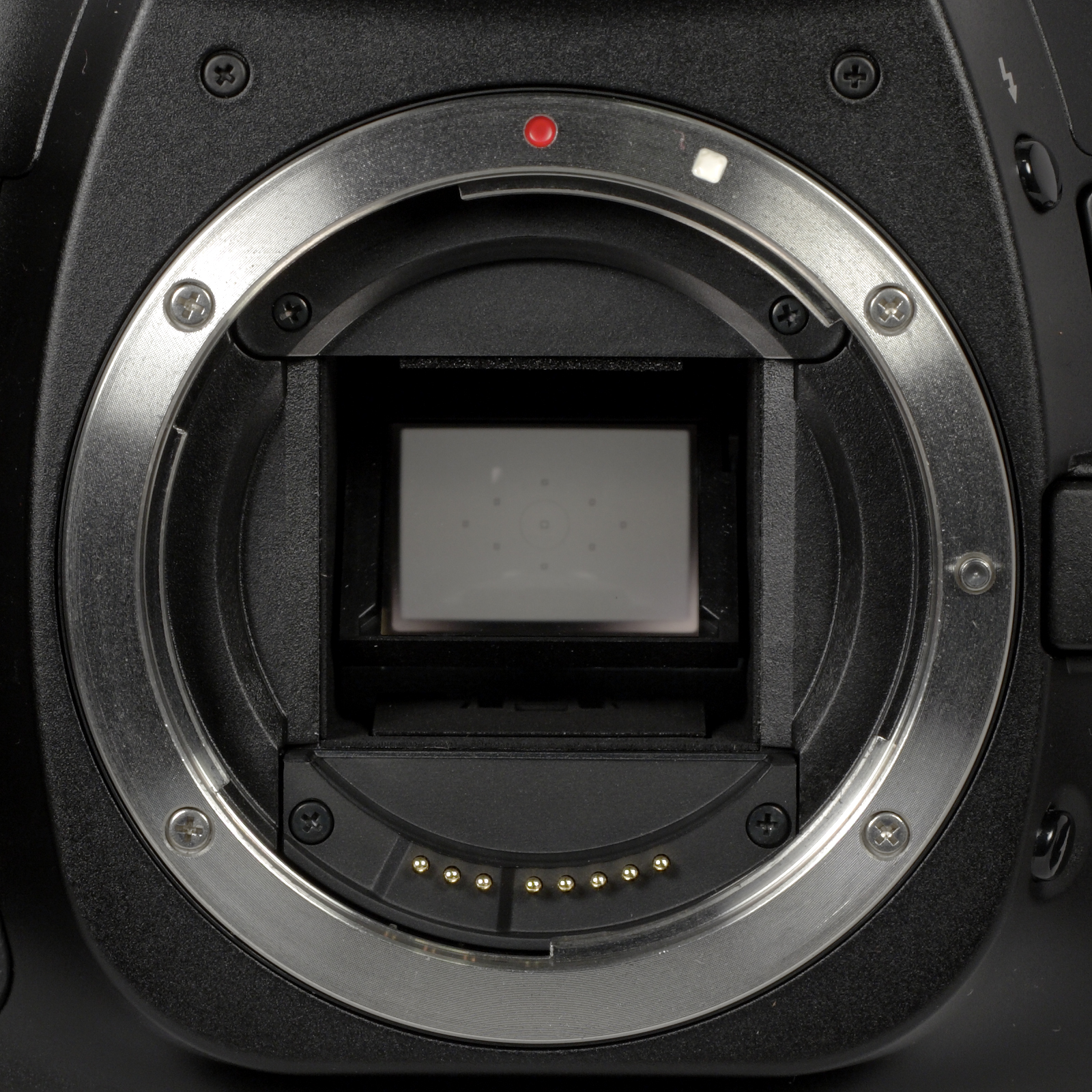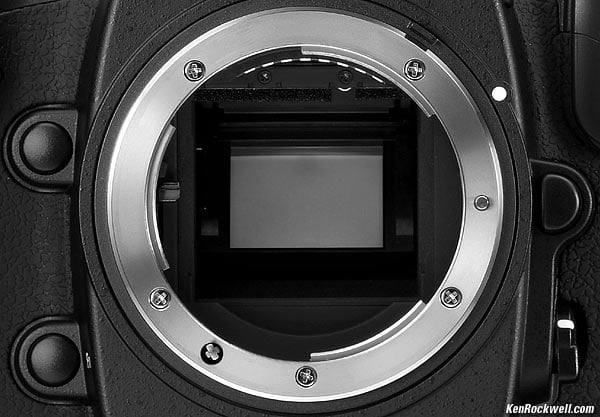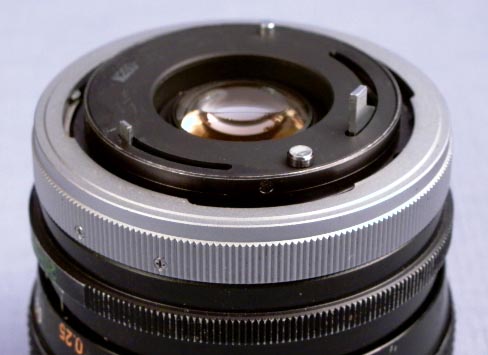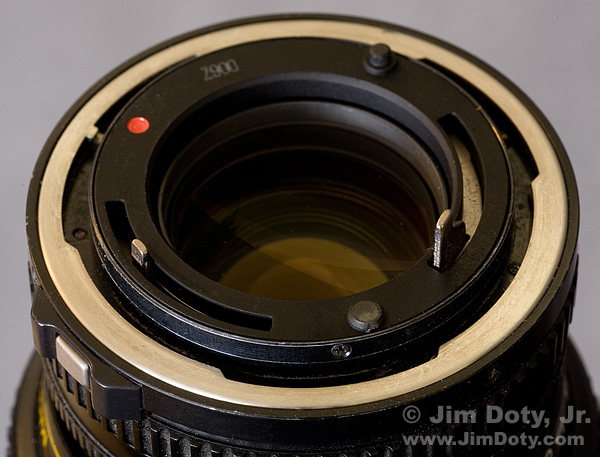Lens mount
Lens or screw threads are standardized in the field of photographic technology, vendor-neutral lens connectors for interchangeable lenses.
The screw thread M39, M40 and M42 form the predecessor of today's standard bayonet connectors on the market and were produced until the 1970s. Especially the M42 thread still offers convenient access to SLR photography with high-quality optics that fail for other connections (new as used) usually more expensive.
In the U.S., the T2 connection plays a role similar to M42 in Europe. More standardized threaded connections are the C-Mount and CS -Mount.
- 3.1 M42 compatibility 3.1.1 SLR systems
- 3.1.2 Mirrorless Systems
- 3.1.3 Other adaptation options
M39 screw mount
The "M " in the designation indicates a metric diameter, the number of the diameter in millimeters. Differences in this connection dimension exist in the pitch of the thread; the most important are the inch 1/26 and 1 mm are very close together, " as well as 0.75 and 1 ( metric sizes ) The slope of 1/26. " - Schneider Kreuznach offers a special thread to match for both.
Filter thread for M39 lenses usually have a pitch of 0.5 or 0.75.
Leica thread
The M39 Leica thread, even Leica L -mount or Leica Screw Mount - called LSM, was used from the 1930s, especially for small- Rangefinder Cameras. Introduced at the Schraubleica it developed later, although even in 1954 replaced by the Leica M bayonet, numerous copies of other manufactures general standard for rangefinder cameras. Today high-quality lenses are still available for the thread.
In addition to the standardization of the thread the flange focal length of the lenses is set to 28.8 mm.
Inseparable for LSM - standard coupling of the distance setting of the lenses is a thing of the rangefinder camera. This is achieved by a cam ring or the lens, which is also moved in accordance with the amount of adjustment at different distances from the lens. The range of motion corresponded to the Einstellbewegungsweite normal lens used by Leica - whose " Objektivhub " was therefore transferred directly to the rangefinder. For lenses of other focal distances that is not possible - here defined stroke must then be generated by an additional mechanism in the interior of the lens.
The Thread itself is also used for enlarging lenses and is still widely spread. Although the lenses "fit", they are incompatible with each other. Furthermore, there are some other camera systems, which also use a M39 thread, due to a different flange focal length but also are incompatible ( Brown Paxette, early Zenit SLRs ).
M39x1
Lenses with the very similar metric thread M39 / 1 were prepared in the USSR and in Japan when copying the Leica thread; at least in the USSR but this was later corrected. Experience has shown that both types of lenses are interchangeable.
A thread was also used by the system Brown Paxette until its conversion to the SLK- bayonet. Paxette lenses can be fitted with a spacer sleeve for the Leica and, by analogy to the Russian M39 SLR lenses by means of threaded sleeve M42 and thus to adapt to DSLR, with a small flange focal length remains. This can be remedied by mechanical reworking of the camera adapter, thus allowing the use over the entire focus range to infinity of the respective lenses.
M39 x 0.75
Enlarging lenses, for example, some focal lengths of the Schneider Kreuznach Componon S were also equipped with the metric thread M39 x 0.75. Similarly, some closures of large- or medium- format lenses are delivered with this measure.
M40 screw mount
Rarely is the M40 screw mount, which was mainly in the 1930s in use. The finished until the end of the 1940s, cameras and Praktiflex Praktiflex II of Praktica Pentacon or possessed these lens mount. It was introduced to go patent litigation with the Leica thread out of the way.
Some CCD line scan cameras use even today, the M40 mounting thread.
M42 screw mount
M42 is the designation for a standard screw thread that was used by many manufacturers. The outer diameter of the screw thread is 42 mm at a pitch of 1 mm per revolution. The back focal length is 45.46 mm. In the normal exposure measurement process on a M42 camera's aperture to set the exposure to the preselected value is closed. The viewfinder image darkens here, as far as the aperture is not selected manually fully open accordingly. This process is called " working aperture ".
M42 is the successor to the older M39 screw thread and comes from a time when the camera manufacturer is not still trying to bind the customer to your own system by proprietary lens bayonets. Widespread found it, for example, as the lens mount manufactured by VEB Pentacon Praktica older generations of cameras and associated lenses (including Beroflex, Meyer -Optik ). Many of photo source ( " Review" ) or Photo Porst offered in the 1960s and 1970s M42 cameras and lenses came from the same source. The formerly widespread M42 screw mount plays today in new business only a subordinate role. However, numerous camera body and an almost incalculable variety of lenses for this thread are conveniently available on the used market.
Lenses with M42 thread can basically use on all cameras for which there are mechanical adapters. In general, however, usually go any automatic functions down to the automatic timer lost. The camera used should be as able to perform the metering through the lens also with working aperture.
The connections of M42 lenses are not at all the same. In addition to the normal attachment, in which the lens is fixed by the tightening of the thread, there are also lenses with mechanical stop. These lenses allow a transfer of the preset aperture value to the camera body and a metering constant at open aperture ( aperture metering, aperture simulation). This system allows the transmission of the lens aperture selected by three electrical contacts on the lens and camera body to the measuring element.
For the M42 screw next to the universal connector also exist six different reflex aperture metering systems: Zeiss Ikon or Voigtlander, Rollei and West -Germany and Singapore, Praktica East -Germany, Pentax, Fujica, Mamiya, Olympus. These six are incompatible with each other and thus each have their own line of lenses. The respective cameras designed for this purpose are called:
For Zeiss / Voigtlander / Rollei Zeiss Ikon SL706, Ifbaflex ( French export variant ), Voigländer VSL1. Related Lenses have no extra- detection name. for Praktica: LLC, PLC-2, PLC 3, VLC, VLC 2, 3 VLC Lenses carry a " electric", either manufactured by Carl Zeiss Jena and Pentacon for Pentax: ELECTRO- Spotmatic, ES, ESII Spotmatic F. Related lenses carry a " Super - Multi- Coated" or "SMC ". for Fujica: ST801, ST901, ST705, ST705W, ST605II, AZ -1. Related Lenses have no extra- detection name. for Mamiya. MSX 500, MSX 1000, 500 DSX, DSX 1000 Associated Lenses carry a " SX ". for Olympus: FTL. Related lenses do not have an extra name recognition, there are only six.
The only standard for the aperture function on for M42 lenses is partly relied on, is to stop-down function with an axially actuated pin. This pin passes during tightening around down in the six- clock position.
If the camera is not operating lever for dimming the lens, this is either a purely mechanical shutter must ( " pre-set aperture " ) have ( ie no pin on the lens mount ), or it must have an " Auto / Manual " switch, so that you, in the "Manual "position, even without the dimmer for light at working aperture, the aperture can close. Otherwise, the aperture remains open, recording and measurement are also as possible.
M42 Compatibility
SLR systems
Canon: All DSLRs auto exposure with aperture priority. With special Dandelion adapters the measurement and AF confirmation is possible. Nikon: low-end DSLRs require manual adjustments, Pro DSLRs allow aperture priority. AF confirmation is possible, but focus on infinity not. Four Thirds: All DSLRs need manual adjustments. Image stabilization works. With special Dandelion adapters the measurement and AF confirmation is possible. Pentax: All DSLRs allow aperture priority measurement with AF confirmation and infinity focus. Image stabilization works. Focus the case depends on the camera model possible. Minolta / Sony: All DSLRs need manual adjustments. Image stabilization works. With special Dandelion adapters the measurement and AF confirmation is possible. Sigma SD1 - SD15 allows automatic metering with aperture priority, focus to infinity and AF confirmation. The aperture should be adjusted for proper exposure metering on the camera to 1.0.
Mirrorless Systems
In digital camera systems with even lower flange and an equal or smaller image circle, such as the Micro Four Thirds system or the E-mount Sony lenses can be used with M39 or M42 lens thread with a suitable lens adapter is also used, the focus is not limited to a finite object distances, and may be performed using the software in the electronic motion detector or the monitor. The exposure is also determined by the image sensor and can be displayed in real time in a histogram with all exposure values and corrected. The image stabilizer can be used when it is realized via the image sensor by the current focal length of the lens used is set in the camera menu.
Other adaptation options
- "Electric " lenses or most lenses with aperture method also work on the default port with working aperture.
- T2 lenses can be adapted with a T -2 adapter on M42 and use with working aperture. Also T2 lenses have a thread with 42 mm diameter at the connection, but with a different thread pitch ( 0.75 mm per turn). If you try to screw the two threads together, they can be screwed together about one turn and then get stuck.
- Medium format lenses: Since all medium format systems a much larger flange than the M42 -Compact system, they can, in most cases with the intermediate stage T2 adapter, be adapted to the M42 system. The various automatic functions are lost. Suitable adapters are available from specialist manufacturers.
- Enlargers from an Eastern European production use partially the M42 thread. To use M39 - magnification lenses because an adapter ring is required.
T2 connection
The T2 connection is a common thread lens mount for cameras and other optical devices. In 1957, the Japanese lens manufacturer Tamron an extensive series of interchangeable lenses for 35 - mm still cameras, all of which had a T2 connection. T2 is now the de facto standard for connecting cameras to telescopes or microscopes.
The T2 mount M42 has as an external thread diameter of 42 mm. The thread pitch is only 0.75 mm per revolution as opposed to 1 mm for the M42. The flange is fixed at 55 mm. The T2 standard is a purely mechanical specification. As electrical or other mechanical elements of the combination of lens must be carried out to camera, is not fixed.
C and CS mount
The C- Mount is a standardized threaded connection for camera lenses in the professional field. The outer diameter of the thread is 1 inch (25.4 mm), the thread pitch is 1/ 32 inches. The flange between the flange of the lens thread and the image plane has a value 17.526 mm (0.69 inches). The C-mount is the SMPTE with the standard SMPTE 76-1996 standardized and is designated by ANSI B1.1 - thread standard as " 1-32 UN 2A ".
In the cine-film technology ( news cameras ) and later in video technology, the C -Mount a widely used standard. In the cine-film and video technology (mainly industrial and surveillance), the C-mount standard is still used today. To make a quick lens change is possible, several of the relatively small lenses with C -mount and fixed focal length lenses were first mounted in turrets or slide changers. Once zoom lenses were of sufficient quality available, these were used.
The CS- Mount is from the C-mount derived, also standardized threaded lens mount for camera lenses in the professional field. The diameter is also 1 inch, the thread pitch of 1/32 inch. Flange which, ie the distance between the flange of the lens and the image plane of the thread is about 5 mm 12.52 mm smaller than the C -mount. Using an extension tube of 5 mm can be converted into a C -mount camera C -mount lens to a CS -mount lens or a CS- mount camera. The adaptation of a CS mount lens for use in a C-mount camera is not possible due to the higher back focus.









